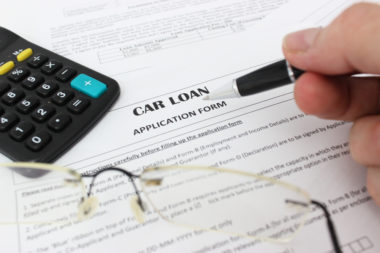If you’re struggling to make your monthly car payment, or if you are rethinking how much interest you’re willing to pay over the course of your loan, refinancing your car loan can be a great decision. However, while many people refinance their car loan to get control of their budget, that is not reason enough to refinance your loan.
There are a few reasons why most people refinance their auto loans, including lowering your interest rates and reducing the amount of your monthly payments. Ultimately, the best way to refinance will depend on why you want to do it in the first place.
When you refinance your auto loan, you are essentially paying off your old loan with a new one, with different terms. You can get this new loan through the same lender, or a different one. It’s a complicated decision that can have a significant impact on your finances, even if it’s a fairly simple process. No matter what your reason for doing so, it’s important to be knowledgeable and prepared so you know exactly what to expect when refinancing your auto loan:
Table of Contents
Check Your Credit
If you plan on refinancing your loan, you need to check your credit score. Your credit score is one of the most important factors that your lender will consider when approving you for a new loan.
It’s still possible to refinance a car with bad credit, but you stand a better chance with a good score. Make sure you understand your credit score and be ready with explanations for any dives or negative items in your history. Also, be prepared for a new hard inquiry; if you are trying to rebuild your credit score or are still on the fence about refinancing, hold off until you are ready for the slight hit your score will take from the hard pull.
Determine Your Car’s Loan-to-Value Ratio
Just as with home loans, your car’s loan-to-value (LTV) ratio is the ratio of the unpaid principal of the loan against the total worth of the collateral used to secure the loan. You should try to estimate what your car’s LTV is, to determine if you owe more on your loan than your car is actually worth. This means your loan is underwater or upside down, which can make refinancing more difficult. Even if you’re able to refinance your upside down loan, it may not be the best move for your finances.
To get a rough estimate of your car’s LTV, look at how much you still owe on your loan. Then, estimate your car’s current market value. You don’t necessarily need a formal appraisal; websites like Kelley Blue Book and Carfax can give you a good enough idea of your vehicle’s value for this purpose.
If your loan is upside down, you may want to explore options other than refinancing, such as selling your car. However, if your car is worth more than you owe on your loan, you’ll likely be able to refinance it with ease.
Review Your Current Loan
In a similar vein, take some time to review the terms of your current auto loan. Make note of your monthly payments and interest rate, as well as how long you have left on your loan. After reviewing, you may decide it’s better to finish your current loan instead of refinancing, depending on how much time is left on it or how much you still owe.
Additionally, reviewing the details of your loan will help prepare you to shop for a new one. You’ll have a better understanding of what you want to get out of refinancing your loan, such as lower monthly payments or a shorter repayment period. Knowing specific, concrete terms of your current loan will make it that much easier to decide if a new loan will work for your needs or if it’s too similar to what you already have.
Gather Documents You Need to Refinance Your Car
In order to refinance your car, you’ll need to have the following documents handy:
- A payment stub from your current auto loan;
- Your driver’s license;
- Your VIN (vehicle identification number);
- Your Social Security number;
- Pay stubs from your last paycheck or proof of employment.
Additionally, you might want to read over your old loan contract. Some lenders have fees for paying off your loan too early, and refinancing counts as exactly that. However, just because there is a fee doesn’t mean that refinancing isn’t worth it. You could still save more money from a reduced rate or a shortened loan term than the penalty amount.
Compare Rates From Different Lenders
When you’re refinancing, it’s important to shop around to get the best rate possible. Some lenders might be more willing to work with you than others. Credit unions, banks, dealerships, and subprime loan companies all offer refinancing; you might have to shop around a bit before you find your best option.
You first need to make sure that you fit the qualifications for whatever lender you’re looking at. Some lenders will only refinance cars that have less than 150,000 miles on them, but others might care about how much your remaining balance is. Before you go through all the effort of applying for refinancing, make sure that you qualify under that lender.
After you have some leverage, contact your original lender. You’re already their customer, and if you threaten to leave for their competitors, they may be willing to refinance your loan at no additional cost. This could be your best refinancing option, since it requires minimal effort and still offers all the benefits of refinancing — if you are prepared to negotiate.
If you do go to a new lender, however, keep in mind who is likely to offer you better rates. You stand a better chance with credit unions and banks if you’ve been a reliable customer there, and subprime lending is traditionally for borrowers with bad credit or poor payment history. Lenders usually consider anything below 580 to be a poor credit score. If you fit in that category, they might be your only shot at refinancing.
Sign Your New Loan Agreement
If you’re able to find a competitive new loan, your lender will walk you through the process of refinancing. They’ll have you sign several papers and advise you how you’ll be paying off your new loan. Be sure to store your copy of these documents in a safe place, in case you need to reference them in the future. All in all, the process only takes a few hours, and it can leave you significantly better off financially.
Image Source: https://depositphotos.com/





